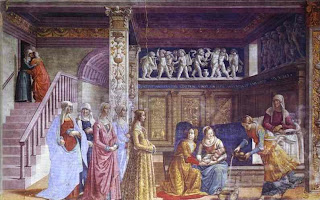I absolutely love art. I have been creative, producing artwork since I was a little girl. I was sketching intricate details into my drawings while all of the other students were making stick people. Art was something that I could do to get away; something that I did not have to share with anyone. Afterall, having a twin sister really seemed to frustrate my space, so this was something where I could take on my own identity.
Ever since I could recall, my brain never necessarily operated in an organized, "mathematical" way, shall i say. I have always thought outside of the box and I love creating original ideas and art that is unique to me.
In high school, I took all of the art classes that were available for me. However, the school's committee was not too concerned about exploring art and making those classes available for the students. I took independent studies in my art classes because I was so fascinated with creating artwork. I would spend my study halls in the art room working with clay, charcoal, pencils, yarn, and paint.
I decided to take art classes at a community college close to my home when I was still in high school so that I could get my feet wet. I discovered how much I would love to carry this on as a profession someday. I learned a great deal from my instructor, such as how to handle criticism and many techniques of drawing. Overall, I think this experienced genuinely made me realize that art was something that I could see myself doing for a long time.
I believe that everyone has their own individual perception of art. So, I do not believe that there is one set definition for the term. However, I believe that it has a lot to do with self-expression. Therefore, I do believe that movies are art, along with music, video games, comics, and television. They are all outlets for one's creativity.
A main source that inspires me to create art is the love I have for other people. Slightly cliche, right? The person I am in love with has the most distinctive beautiful features that I love drawing, which gives me incentive to see things in others in a different light. I think that the deep feelings that I feel give way through my artwork, portraying images and features in such a way that others may not necessarily see them. I feel as though this feeling is applied to everyone, but they choose to use music or movies as their creative outlet.
Although this movie was not made in the past year, I think that Eternal Sunshine of the Spotless Mind was an amazing film. It came out in 2004, but I continue to watch it all of the time. I think that the director did an incredible job. The lighting was interesting and a lot of small details were changed throughout the movie. I believe this movie was the most creative film that I have seen in a while. It gave the audience a sense of a dream-like state, which I found appealing. The viewer sees an entirely different side of the actresses and actors that are playing these characters. That is why I think this movie is a great form of art.
I love the art of music. I enjoy music that creatively expresses true feelings. I am into Godspeed you! black emperor; this band is really instrumental, placing sound effects and speeches into each track. The songs are lengthy, but I adore that, because you can enjoy the state of mind that you are in that much longer. I enjoy the music of Rilo Kiley and Andrew Bird, as well. I really appreciate jazz/folk/blues music and believe that there is a lot of emotion in that kind of musical expression.
I am looking forward to seeing how everyone else perceives art and learning new ways of expression in this class. I am an interior design major and I believe that with my artistic ablility and creative thinking, I could go a long way in this field. I especially believe that a sense of art will better me in this profession.























